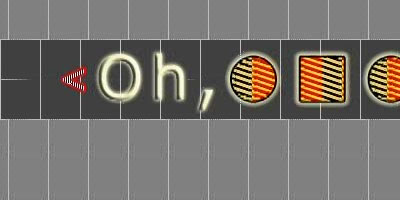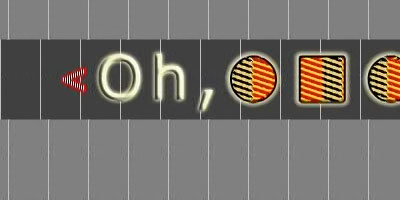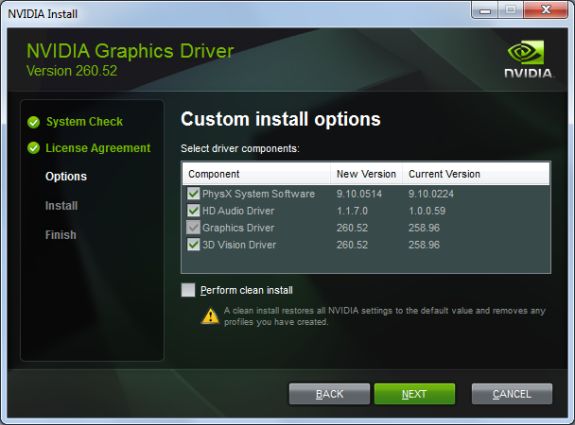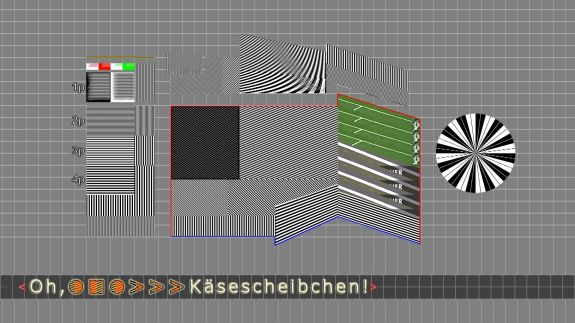NVIDIA’s GeForce GTS 450: Pushing Fermi In To The Mainstream
by Ryan Smith on September 13, 2010 12:02 AM EST- Posted in
- NVIDIA
- Fermi
- GeForce GTS 450
- GF106
- GPUs
Forceware 260 & Bitstreaming Audio
Launching alongside the GTS 450 is NVIDIA’s Forceware 260 driver series, which should be available for download later this morning. This release brings an interesting mix of changes to performance, features, and even the installation routine.
We’ll start with the installer. The old Installshield installer is out in favor of a new NVIDIA-developed installer. By moving to their own installer, NVIDIA was able to do some consolidation and some simplification of the install process. Consolidation comes in the form of all of NVIDIA’s major driver packages being in the same installer. Previously the 3D Vision driver set was a separate download from the main drivers; now they’re part of the main driver bundle. In exchange for consolidating their drivers, NVIDIA now offers the ability to pick & choose which driver components to wish to install; currently there are the main drivers, PhysX, the audio drivers, and the 3D Vision drivers. If you’ve used the AMD Catalyst installer, then you should be familiar with this.
Meanwhile simplification comes from a few different changes. When doing a custom installation NVIDIA offers the ability to do a clean install straight from the driver installer, vastly simplifying the clean install process and eliminating the need for a 3rd party utility to do this. Do keep in mind however that a clean install cleans everything including saved profiles, and under normal circumstances a clean install should not be required.
The other reason we call these drivers simple is that the new installer is much faster than the old Installshield installer. NVIDIA specifically cites SLI situations – where the old installer would install the same drivers twice (once for each card) – but even in a single card situation the process is noticeably faster; we shaved 15 seconds off of the installation process compared to the 258.96 drivers. With any luck you aren’t installing drivers often enough that 15 seconds makes a huge difference (and if you are, you’re probably me) but if you are, then there’s definitely a perk for you in these drivers.
Finally, the size of the driver package remains virtually unchanged from the previous driver release. Our 64bit 260.52 international beta installer is 154MB, while the 64bit 258.96 international installer is 153MB; if anything it’s slightly smaller after factoring in the fact that it now contains the 3D Vision drivers too. But it goes without saying that modern video drivers from both AMD and NVIDIA are ridiculously huge, and this new installer doesn’t do anything to change that.
Meanwhile NVIDIA is also pushing this driver release as another big performance-boosting release. Compared to the 256 release for the GTX 460 it’s not nearly as large or as widespread of a performance boost, but there are several targeted titles that got performance boosts, mostly in SLI mode. As far as our own benchmark suite is concerned, the only titles we saw receiving a major improvement in single-GPU operation were Mass Effect 2 where performance improved 11% with our 768MB GTX 460, and STALKER: Call of Pripyat where performance improved 5% on the same card at the same resolution.
Finally, this release enabled bitstreaming audio for the newer members of the 400 series. As you may recall in our GTX 460 article, starting with GF104 NVIDIA has given the hardware the capability to bitstream the lossless audio formats DTS-HD Master Audio and Dolby TrueHD; GF100 and GT21x were limited to 8 channel LPCM. When the GTX 460 launched the drivers weren’t ready, and only unprotected bitstreaming was working. With this release the protected audio path is working, allowing bitstreaming of lossless audio from protected sources such as Blu-Ray discs.
We didn’t have the chance to test this on a GTS 450 as we had to catch a flight to IDF, however we did test this against a GTX 460 with the new drivers and it worked as it was supposed to.

Cheese Slices: GTS 450 Deinterlacing

Cheese Slices: Radeon HD 5670 Deinterlacing
For those of you looking at a GTS 450 as an HTPC card, we also quickly ran our favorite Cheese Slices test as a quick look at deinterlacing quality. As this is a test of computer power (if you have enough shaders, you can pass the test) there aren’t any huge surprises here. When compared to the Radeon HD 5670, the GTS 450 does a slightly better job properly deinterlacing the angled lines within the shapes at the bottom of the screen, but it does a poorer job deinterlacing a box full of angled lines elsewhere on the screen. Overall this is a wash between the two cards and par for the course for modern cards with this test.
On one last note, these don’t appear to be NVIDIA’s best drivers with respect to everything working. The 260.52 beta drivers we’re using have a bug in OpenCL that keeps it from working, which is why you will see that we have dropped OpenCL benchmarks in today’s review. NVIDIA tells us that the version of the 260 drivers being released later this morning have the issue fixed, but it’s not a particularly encouraging sign since we don’t normally run in to issues with their beta drivers.
















66 Comments
View All Comments
Ryan Smith - Monday, September 13, 2010 - link
If I had my way, we'd have every card known to man on our charts. But if I had my way, days would be 50 hours long to accommodate all of that testing...In any case not having a GTS 250 is not an oversight on our part - we simply do not have a GTS 250 to test with.
Stuka87 - Monday, September 13, 2010 - link
So it seems to me like the 450 is trying to match performance with the now year old 5770. I really think nVidia should have one upped the competition, like they did with the 460 release.I just can't see this card getting the life that nVidia needs to get out of it. AMD will do a refresh long before nVidia does, which will ultimately mean the 450 will have a very short life in comparison to the 5770.
HangFire - Monday, September 13, 2010 - link
This comment is right on the mark, and part of a disturbing trend I see with new video card generations in general and Nvidia in particular. With each new generation we are getting the same performance, more or less, at the same price points, the only difference is a newer Direct X level, lower power, or less noise, or a new video connector, etc.If all you care about is getting a certain FPS in a few games on one monitor with a certain level of AA and eye candy, the older generation cards would often be a better choice, if they were only available. Unlike in previous generations, which seemed to stay in production forever even when obsolete, the best values either go away (like the 4770 or GTX 275), get recycled at the same or higher price point (8800/9800), or get replaced by similar performance at that price point (GTS 450 vs 250).
The end result is that for a give price point, you are not buying any more Frames per Second then you were 2 years ago- unless you paid too much and made a really bad choice 2 years ago.
While at first I was thrilled to see so many older cards in this review, the GTS 250 is conspicuously absent, perhaps because it is rather embarrassing to see what little new the 450 has to offer in terms of price/performance. The 450 is not yet on Bench either, though I hope that will be remedied soon.
So, congratulations Nvidia, you now have a more complete DirectX 11 lineup, but you've offered me nothing in price/performance to make me want to replace any of my DirectX 10 cards.
just4U - Monday, September 13, 2010 - link
I disagree. Annand put up numbers for the 4850 which has always pretty much walked allover the GTX250 (9800GTX 8800GTX etc) Looking at the graphs the 450 is somewhat faster so including the 250 benchmarks is not neccessary.Also, Both Ati and Nvidia seem to be in a holding pattern as far as performance goes with their current lineups. People upgrading from the latest and greatest from the last generation of video cards won't notice huge gains performance wise. What they will notice (depending on the card) is lower temperatures, less power consumption, and ofcourse more features.
Those upgrading from cards 2+ years old or value oriented cards from the last generation are likely to see the most gains overall with these new ones. The rest of us get a sideways upgrade at best. Atleast thats my opinion anyway.
geniekid - Monday, September 13, 2010 - link
I must also disagree, respectfully. A couple of the benchmarks here show that for less than half the price I paid for my top-of-the-line factory OCed 9800GTX several years ago, I can get about the same or slightly better performance. This shows me that progress is being made - or, at the very least, that price/performance is improving over time.HangFire - Monday, September 13, 2010 - link
Wow, thanks for the respect in the disagreement! But then, this is AT not Tom's.Speaking of Tom's, I just read their GTS450 review, and their statement after the DX9-10 benchmarks (CoD:MW2 and Crysis) mirrors mine vis-a-vis the GTS 250- "Naturally, numbers like this don’t compel you to upgrade." While another site quoted 20-25% better performance, Tom's had the 250 faster than the 450.
I would expect a three generation old top-of-the-line card to have poor value compared to a mainstream card of today. (I say three because a 9800 GTX OC is essentially an 8800 Ultra). Nvidia complicates the issue with generational recycling and the missing GTX 3xx DirectX 10.1 cards that never existed. I'm trying to compare like-to-like, that is mainstream cards in the $140 to $150 range (price at introduction).
If you look at the incremental performance differences of the mid-stream cards 8800GT->9800GT->GTS 250->GTS 450, anyone that actually bought each of these cards for $130->$150 expecting a big generational performance boost with each jump was sorely disappointed. On the AMD side things are a little better, but the mainstream level 4xxx to 5xxx jump was more about power and Eyefinity than performance. (Of course their top-end cards made big jumps, at big $$$).
The new GTS 450 is launched at the same price point the GTS 250 had, and offers very similar performance. Of course, the 250 dropped in price like a stone, because it had to, and the 450 may have some adjustments ahead of it. But let's say it was 25% faster across the board, is it compelling? The 7800GT to 8800GT upgrade, now that was compelling.
just4U - Monday, September 13, 2010 - link
You have to remember something though.. the 8800 line was a new standard by which all cards are/were measured by. Like the Radeon 9700/800 it takes years to move past it... We do not see those crazy bumps in performance and features happen often afterall.IceDread - Monday, September 13, 2010 - link
"The GTX 460 was a card that made the comparable AMD card obsolete and brought significantly improved performance to the $200 market. NVIDIA had a card built to hit one of AMD’s weak spots, and it struck beautifully. "A news site should strive towards being unbiased but anandtech sure does not do that.
just4U - Monday, September 13, 2010 - link
Have you had the oportunity to use the 460? Or the 5830/50 that it competes against? Anandtech hit the nail on the head with that statement and it's not based upon Ati/Nvidia bias. Simply put it's one of the best buys on the market right now and with all of Nvidia's misteps it's surprising to see them come out with a card that is so hard to pick fault with.heflys - Monday, September 13, 2010 - link
Yeah, the GTX 460 1gb made the 5830 obsolete, but the 768mb version sure didn't. And the 5850 has started to come down in price, and you can now pick it up for $259 after rebate.